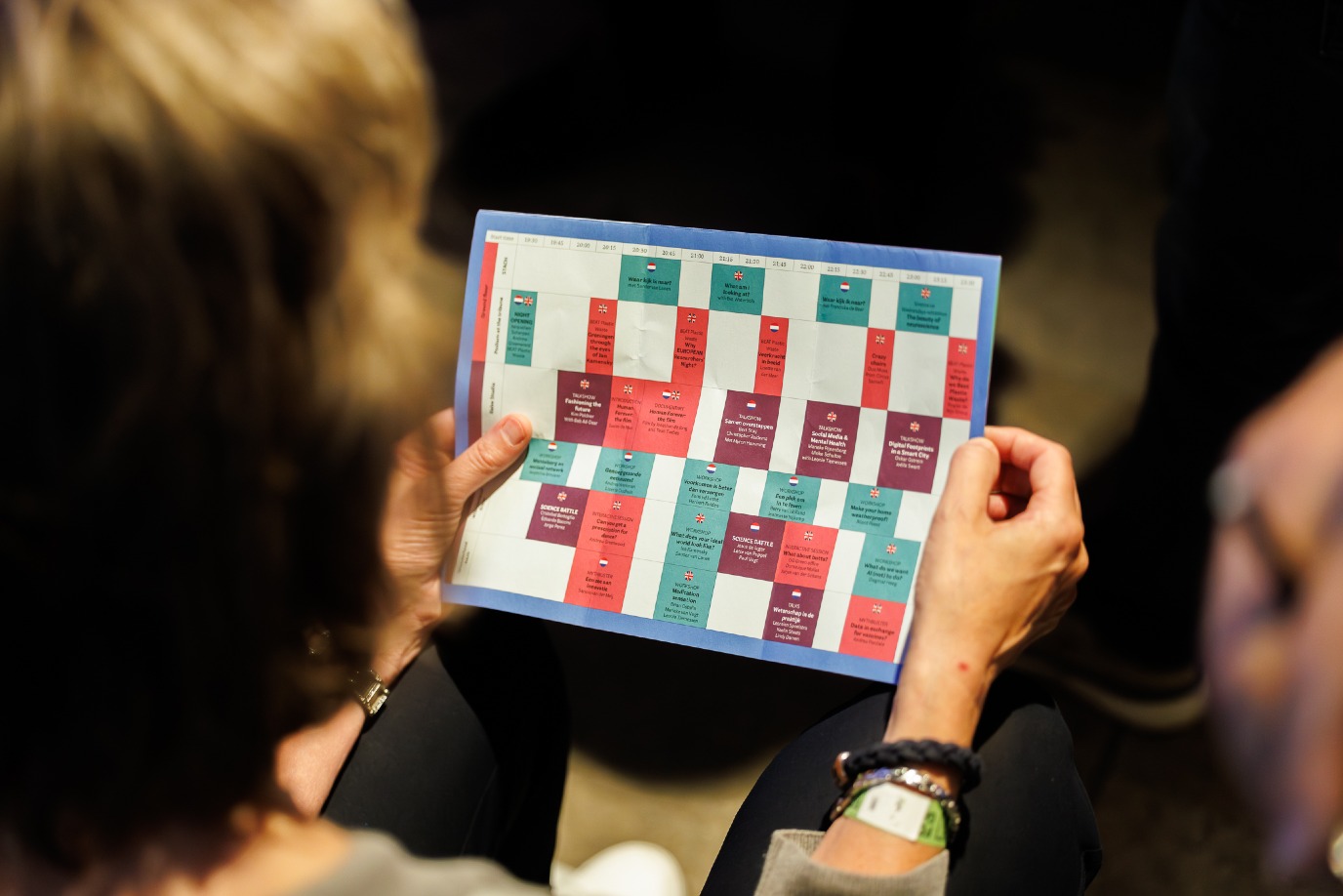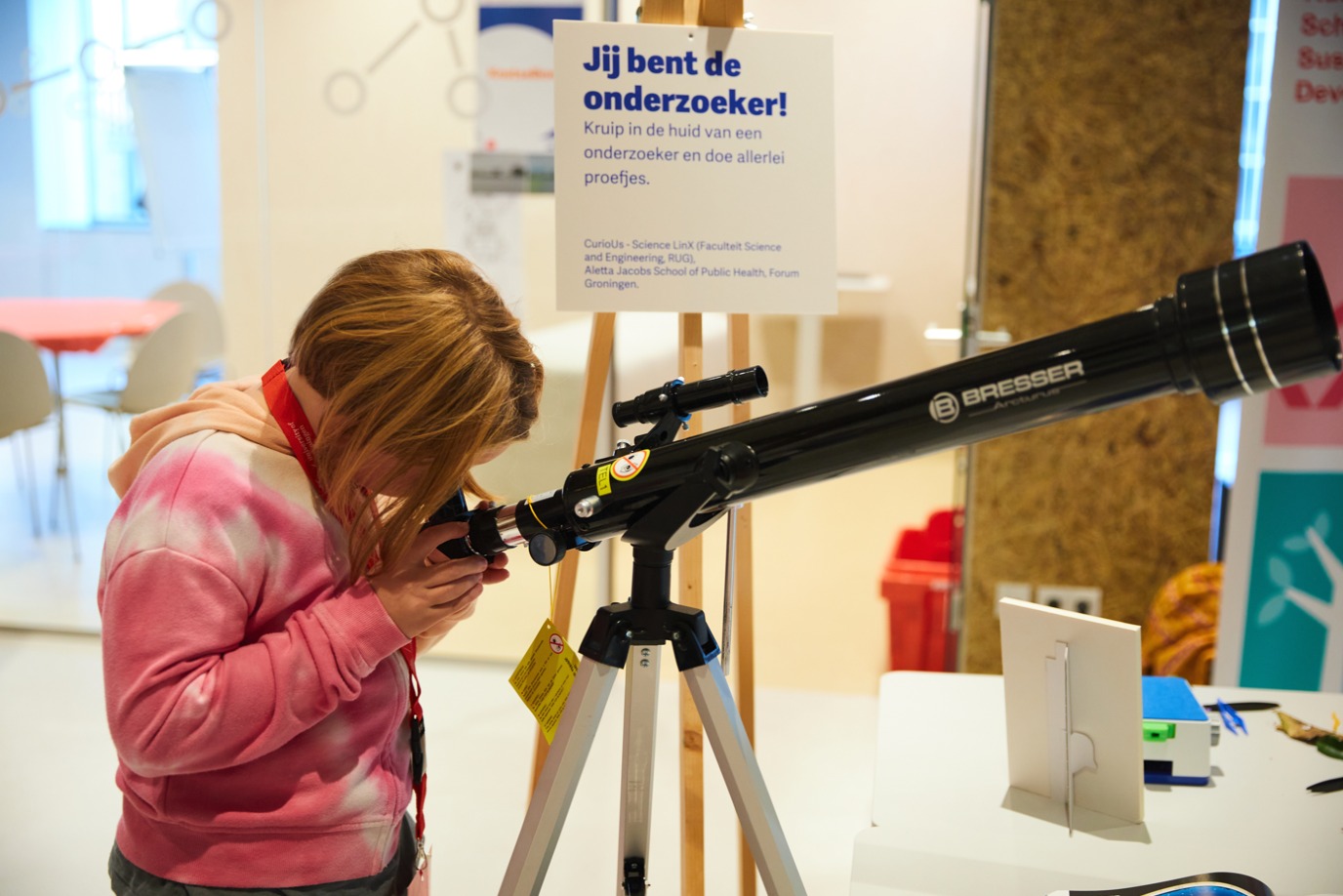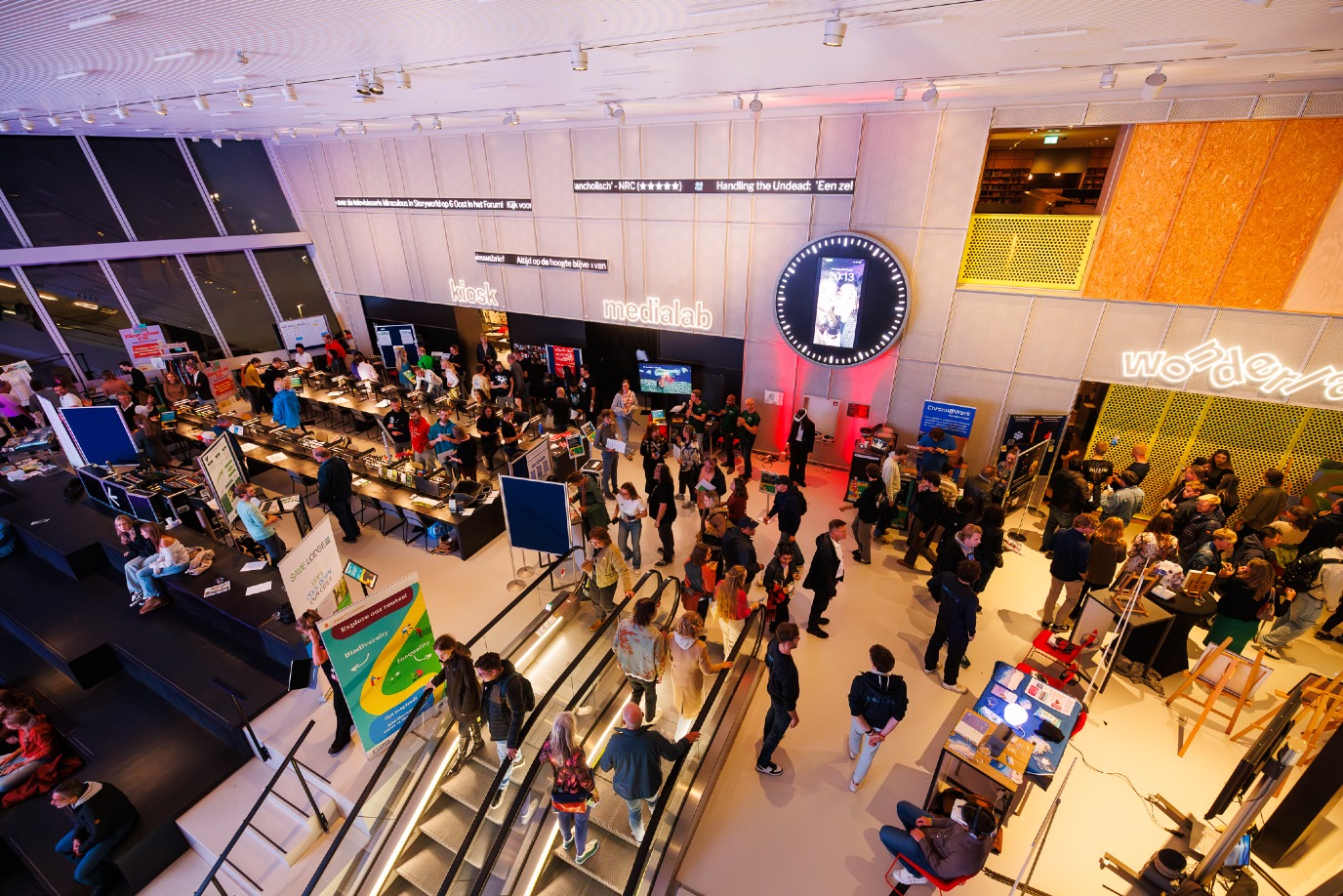The great part is getting direct feedback as a researcher
The European Researchers' Night (ERN) and Zpannend Zernike (ZZ) are science festivals where researchers interact with a broad audience. ERN is aimed at adults, while ZZ is designed for children. In this two-part series, UG researchers talk about their experiences last year. ‘We were in the right place with our stand, right next to the bar.’
Text: Jelle Posthuma
In addition to presenting their research, Zpannend Zernike and ERN offer scientists the opportunity to actually conduct research during the festivals. Janina Wildfeuer, Assistant Professor at the UG, together with fellow researcher Ielka van der Sluis, collected data for their research during the event. 'We did a study that focused on three comic pages about the Heimlich maneuver (abdominal thrusts to clear a blocked airway, ed.). The comic pages were meant to replace the classic poster instruction explaining the manoeuvre. In several US states, it is required by law to display this poster in restaurants.'
The three comic pages are an initiative by artists who wanted to present the traditional Heimlich poster in a more appealing way. Some of them follow a traditional page layout, while others have a more complicated layout and style. ‘We cut up different parts of the cartoons, the scenes and speech balloons, into puzzle pieces. We then asked visitors to put the puzzle in the right order, while we observed their decisions. Ultimately, we want to compare the results to a layout analysis of the comic pages and look at the differences in understanding and reproducing the comics. This study can contribute to the knowledge about the effectiveness of different comics in the context of health communication. This is important because comics are increasingly being used to convey messages.'
Direct feedback
The survey at the ERN is not quite the traditional way of collecting data, Wildfeuer acknowledges. ‘We didn't ask for demographic data, for example, to avoid scaring off participants.’ There was a lot of interest: 70 people eventually took part in the survey. ‘Well after 11 in the evening, people were still doing puzzles. We were also in a good location, right next to the bar,’ laughs Wildfeuer. Participants were very interested in the project, she says. 'We got a lot of questions after they put the puzzle together. Participants wanted to know what we would do with the research. The great thing is that, as a researcher, you get direct feedback. Health issues naturally appeal to people as well.’
A fair amount of work went into preparing the test, Wildfeuer continues. 'We created the puzzles ourselves. That entailed a little risk: is it worth the time investment? But it was a really good experience, which also yielded a lot of data. We are still analysing the data, but we expect to publish a research article about it soon. It was definitely worth it.'
Diversity
Valeria Cernei, PhD at the Institute for Science Education and Communication, also conducted research during ERN and Zpannend Zernike. In her case, it was an impact evaluation study of the two events. Cernei's PhD research revolves around science communication, in particular the interaction between knowledge systems. ‘Science’, the PhD student explains, ‘is one of many existing knowledge systems; I study the power dynamics between them. Science is often attributed a lot of authority, while other forms of knowledge, such as local knowledge (of people living in and understanding an ecosystem) and experiential knowledge, are also very valuable, yet given much less consideration.'
There is also inequality within the scientific knowledge system, between disciplines, where the natural sciences are perceived as more reliable than the social sciences, and within academia as an institution, where ‘minoritized people’ struggle for credibility, Cernei says. ‘The hierarchical distinction between and within knowledge systems is detrimental to fruitful interaction and collaboration.’
For the European Researchers' Night and Zpannend Zernike, Cernei was asked by the organisers to conduct research on the inclusivity of the events, to learn for the following editions. The impact of the festivals and various practical matters were also assessed. According to the PhD student, impact can be expressed in different ways. One of the key aims of ERN was to show the researcher as a ‘human being’, thus reducing the supposed gap between academia and society. For Zpannend Zernike, the organisation also wanted to enthuse children about science careers and provide various role models.
Both events were successful in achieving these goals, according to Cernei. At the same time, diversity remained a challenge: ‘The audience were mostly middle-class visitors with an existing interest in science.’ Contrary to common belief, scientific interest is not politically neutral, the PhD student argues. 'It is not like an interest in rock music. An interest in science provides people with certain advantages that help them navigate the world, it’s an asset in our societies.’ In the case of Zpannend Zernike, the group of participants was more diverse because of the involvement of primary schools.
Collaboration
It is essential that ‘minoritized groups’ also participate in science festivals, as well as feel represented and welcome at these events. According to the PhD student, it can help to organise the events in a variety of locations. 'It is important to connect the events with local communities. For example, think of community centres or refugee shelters. This way, we can better distribute ‘science capital’.’ Moreover, collaborating on the program-making with local communities may prove fruitful, and help include topics that people want to learn or talk about, says the PhD student. ‘In this way, topics better match the needs of the audience.’
Almost all visitors to ERN had a ‘great time’, Cernei stresses. ‘The reactions were almost exclusively positive.’ The same was true for Zpannend Zernike. "We had the children fill in questionnaires using smileys. They were also invited to draw their experiences on a wall to increase interaction. In doing so, we aimed to make data collection an engaging and fun part of the event itself.'
You can join the next edition of the fall science festivals by 1 May by registering via this link.




European Researchers’ Night and part of the Zpannend Zernike festival is co-funded by the European Commission, under the Horizon Europe - Research and Innovation programme, grant agreement No. 101162172.
| Last modified: | 24 April 2025 09.41 a.m. |
More news
-
24 March 2025
UG 28th in World's Most International Universities 2025 rankings
The University of Groningen has been ranked 28th in the World's Most International Universities 2025 by Times Higher Education. With this, the UG leaves behind institutions such as MIT and Harvard. The 28th place marks an increase of five places: in...
-
05 March 2025
Women in Science
The UG celebrates International Women’s Day with a special photo series: Women in Science.
-
16 December 2024
Jouke de Vries: ‘The University will have to be flexible’
2024 was a festive year for the University of Groningen. In this podcast, Jouke de Vries, the chair of the Executive Board, looks back.

